Introducing: Raw Milk Cheese Appreciation Day! Unpasteurized Cheese for the win.
We here at Antonelli’s have an official position on raw milk cheeses: we plead the 5th! But seriously, we embrace the remarkable goodness of so many pasteurized cheeses, along with countless unpasteurized cheeses (and we’ve also known some of each that aren't so great). As cheese professionals, we realize that many folks believe raw milk is inherently better. Still, we maintain that the milk is only a part of the entire makeup of cheese, and we approach each cheese that comes our way with a clean slate of curiosity.
Raw milk cheeses, like the original Italian Parmigiano-Reggiano or Swiss-made Gruyère AOP, are a source of fierce debate across the cheese world. Made with milk that has not been pasteurized (referring to the standardized heat-treatment of milks, preceding the cheesemaking process), raw milk cheeses are regarded by some as more nutritious, and more flavorful.
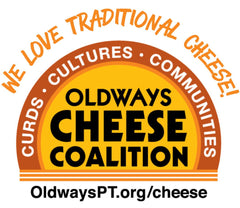
In 2015, the Oldways Cheese Coalition created the Annual International Raw Milk Cheese Appreciation Day (aka #RawCheeseDay) to highlight the diversity and deliciousness of cheeses made with raw milk. Since 1999, Oldways, along with a group of dedicated producers, importers, retailers, and cheese lovers, have advocated to preserve raw milk cheese traditions around the world. The Oldways Cheese Coalition’s primary mission is “to inspire people everywhere to embrace the joys of the old ways of eating traditional cheeses in healthy amounts.”
The Raw Facts:
- Raw milk cheeses are made with milk that has not been pasteurized (or ever heat-treated to a higher degree than an animal’s natural body temperature).
- In the United States, it is illegal to have a raw milk cheese that is aged less than 60 days. (This explains why some cheesemakers have to act creatively to provide authentic-tasting cheeses, such as Camemebert, for the US market.)
- One principal goal of using raw milk in cheesemaking is to preserve beneficial nutrients in cheese.
- Producing cheese using raw milk amplifies the intense rules, regulations, costs, and risks of being a cheesemaker.
- Pasteurization removes many of the fungi spores, yeasts, and microorganisms that can contribute to a cheese’s unique profile.
- Thermization, a middle ground between raw and pasteurized, involves bringing milk up to 131° F for several seconds (kind of like running the milk through a very warm pipe). But – all cheeses that are not officially pasteurized are considered raw by the FDA (including thermalized).
Why is Raw Milk Cheese Illegal in the United States?
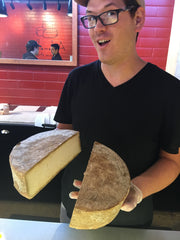
It isn’t! “Raw milk” itself can often be confused with raw milk cheese; however, they are entirely different, each with unique properties. Case in point: we don’t call raw cacao the same thing as chocolate! Take Antonelli’s Cheese Shop favorite Pleasant Ridge Reserve, made at Uplands Cheese in Wisconsin. This cheese has won Best in Show a record three times at the annual American Cheese Society conference – and it’s made from start-to-finish with unpasteurized milk. Pleasant Ridge Reserve is a great example of highest quality ingredients and natural cheese aging techniques, combined with utmost care taken by cheesemakers and purveyors, ensuring that raw milk cheeses are safe to enjoy.
In case you’re wondering, here’s the source of the confusion: in the United States it is illegal to have a raw milk cheese that is aged less than 60 days. Why? When the FDA first came up with the 60-day rule in 1949, studies indicated that no known harmful pathogens could survive the aging process for more than a portion of two months, so the time frame was rounded up to 60 days for good measure. True, a lot has changed since 1949, but it’s not in our wheelhouse to question FDA guidelines – we just observe them faithfully!
Potential Benefits of Raw Milk Cheese

There are many, mostly in the areas of health and pleasure. Raw milk cheese is known to develop a wider array of flavors in aged cheeses, due to the natural flora, yeasts, and enzymes. It can also inspire perceptible glimpses of a specific place, otherwise known as terroir, through reflections of climate, soil, and the skill of the cheesemaker. For cheese enthusiasts, raw milk cheeses provide a chance to connect with traditional, artisanal cheese-making methods, supporting local producers and savoring the true essence of cheese craftsmanship.
Raw milk cheese also adds calcium, phosphorus, and magnesium to your system; plus, healthy bacteria with synergistic strains of digestive enzymes that aid in processing sugars, fats, and proteins. In other words, raw milk cheese delivers fantastic nutrient values, aids in digestion, and may help fight allergies and gut infections. To boot, nutrients in cheese support your metabolism, protect against illness, and strengthen your bones – promoting a balanced microbiome and overall wellness. Yes, Please!
Yet, some doctors do recommend pregnant persons and those with compromised immune systems to avoid raw milk cheese, as it could hypothetically contain harmful bacteria, posing a potential health risk. This is why many countries have strict regulations around raw milk cheese production and sales.
Why Should I Care About Raw Milk Cheese?
The Oldways Cheese Coalition often looks to tradition for guidance, and some of humankind’s original recipes were – of course – raw milk cheeses. Take Roquefort blue as an example, not only is it delicious and safe to enjoy, its cheesemaking process honors traditions of the milk, animals, and farmers that produce it.
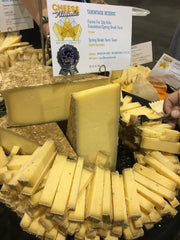
Moreover, raw milk cheeses are often under attack, as problematic media agents conflate consuming raw milk (and the potential illnesses associated with it) with consuming raw milk cheese. These campaigns have placed undue pressure on artisan cheesemakers, forcing many to turn away from producing raw milk cheeses, as these added hurdles and barriers make it too difficult a burden.
Those who seek the facts about raw milk cheese may find that they prefer it because they perceive it has a richer, more complex flavor than pasteurized cheese. Others appreciate the fact that raw milk cheese is made using traditional methods, and they enjoy supporting small, artisanal cheese makers who use raw milk in their cheese.
Antonelli’s: Raw Milk Cheese Selection!
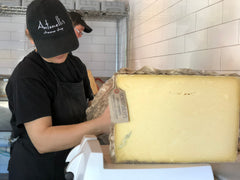
Regardless of your milk preference, one thing is certain: cheese is a testament to the magic that occurs when simple ingredients are transformed through time, temperature, and technique. Next time you savor a piece of cheese (hopefully from our Shop or at our Cheese House!), remember the journey it took from the dairy to your plate. Whether raw or pasteurized, it's all delicious in the end!
As mentioned, some of the most well-known cheeses around the world are raw milk cheeses. And you know we’ve got them at the Shop. Some of our favorite unpasteurized cheeses that we regularly carry in the shop include:
- Pleasant Ridge Reserve
- Oma
- Grayson
- Indigo & Caldera
- Flory’s
- Jalapeno Cheddar
- Espanola cuts (Goatilicious)
- Marcel Petite Comte
- 1655 Gruyere
- 1605 Manchego
- Reading Raclette
- Eldo
- Roquefort
The Shop is open daily from 11 AM - 7 PM if you want to stop by and taste across our cheese case! We can help you pick out a perfect raw milk cheese for you to snack on or use in your next cooking excursion! Conversely, if you’re ever ordering a tray or attending an event at Antonelli’s, we can make sure that all cheeses are pasteurized if need be. Just let us know when ordering, or while purchasing tickets!
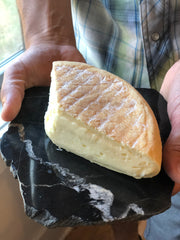
We also have a plethora of classes, tastings, and dinner series at our Cheese House almost every evening where you can taste and compare all types of cheeses! Be your own judge on raw milk VS. pasteurized milk cheeses. We all know that you can’t knock it ‘til you try it! And with food, you’ve got to try it all. If you would like to learn more about this topic, read this article: Why Raw Milk Cheese is Celebrated for Flavor and Scrutinized for Safety, by Simran Sethi. And remember, “Do Good. Eat Good!”
*Please Note: To pregnant persons, and to those with underlying health concerns – consuming any type of food comes with certain risks, so do find out if it’s right for your individual situation before you go for it. In the US, some doctors advise that pregnant women only consume pasteurized, aged cheeses. While we may have mixed feelings on these matters, definitely follow your doctor’s specific advice. We’ll be ready to meet you at the cheese counter and pick up where we left off, whenever the time is right!





